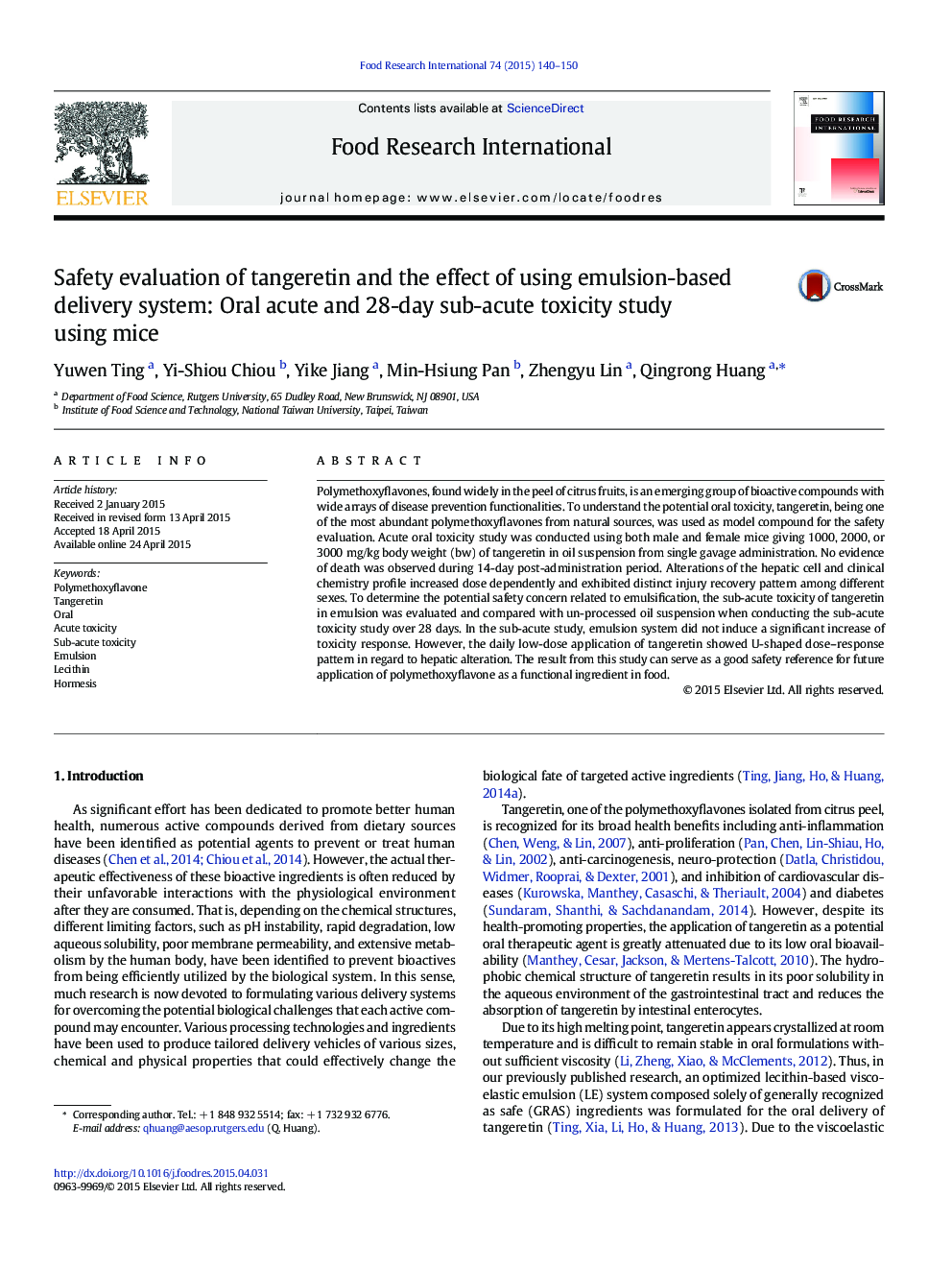| Article ID | Journal | Published Year | Pages | File Type |
|---|---|---|---|---|
| 4561415 | Food Research International | 2015 | 11 Pages |
•Oral acute and sub-acute toxicities of polymethoxyflavone were studied.•Tangeretin affected the cell morphology and lipid metabolism in liver.•Distinct injury recovery pattern among different sexes was observed.•Emulsion-based delivery system of tangeretin did not impose higher toxicity response.
Polymethoxyflavones, found widely in the peel of citrus fruits, is an emerging group of bioactive compounds with wide arrays of disease prevention functionalities. To understand the potential oral toxicity, tangeretin, being one of the most abundant polymethoxyflavones from natural sources, was used as model compound for the safety evaluation. Acute oral toxicity study was conducted using both male and female mice giving 1000, 2000, or 3000 mg/kg body weight (bw) of tangeretin in oil suspension from single gavage administration. No evidence of death was observed during 14-day post-administration period. Alterations of the hepatic cell and clinical chemistry profile increased dose dependently and exhibited distinct injury recovery pattern among different sexes. To determine the potential safety concern related to emulsification, the sub-acute toxicity of tangeretin in emulsion was evaluated and compared with un-processed oil suspension when conducting the sub-acute toxicity study over 28 days. In the sub-acute study, emulsion system did not induce a significant increase of toxicity response. However, the daily low-dose application of tangeretin showed U-shaped dose–response pattern in regard to hepatic alteration. The result from this study can serve as a good safety reference for future application of polymethoxyflavone as a functional ingredient in food.
